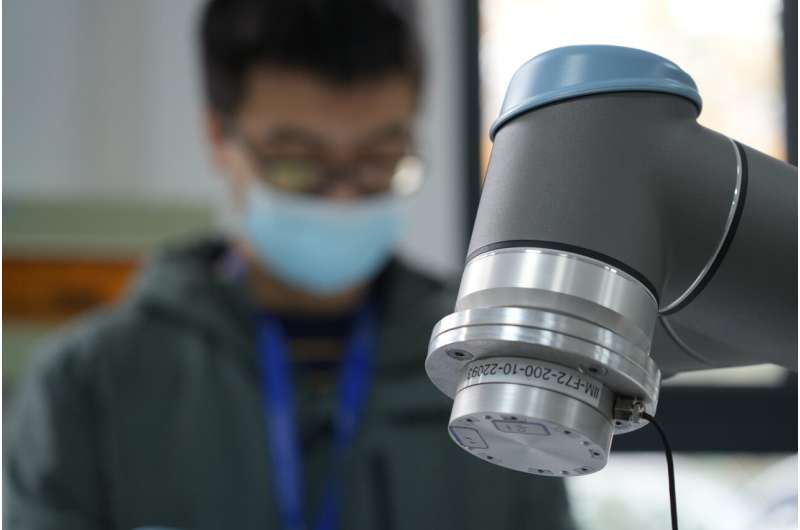Six-dimensional force and torque sensor helps robots feel and touch

As an integral part of modern life, sensors are now almost ubiquitous. They measure physical input from the environment and convert it into data that can be interpreted by humans or machines. A new six-dimensional force/torque sensor has been developed by a research team from the Hefei Institutes of Physical Science of the Chinese Academy of Sciences.
"It has been over three decades since we started our research in this field," said Prof. Sun Yuxiang, who is also head of the team, "now our sensors have been applied in many fields, including deep sea and aerospace."
The sensor is composed of mechanical structures and a signal processing module. The signal processing module realizes the functions of analog signal processing, digital signal processing and signal transmission. The team's research focuses on the structure of elastomers and signal processing methods.
Elastomer structure is the core part of the multi-dimensional force sensor. Its form affects the sensitivity, dynamic performance and dimensional coupling of the sensor. Signal processing methods include digital filtering, temperature drift compensation, fault tolerance processing, etc., which are important to improving the signal-to-noise ratio of the sensor and ensuring the accuracy and stability of measurement.
The sensor can be used for real-time force feedback control and mechanical property testing of intelligent robots. It allows robots to simultaneously detect surrounding force and moment information. The dual E-type membrane structure with independent intellectual property rights has been adopted to realize the integration of sensitive unit, signal conditioning module, SoC and communication module. With the help of the sensor, robots can feel and touch.
The team is able to offer customized sensor design with high precision and superior stability. "We can meet consumers' needs for tailor-made products at reasonable prices," said Sun.
So far, they have passed a pressure test of 50 megapasals, and the next step is to test in 4,500-meter-deep seas.


















